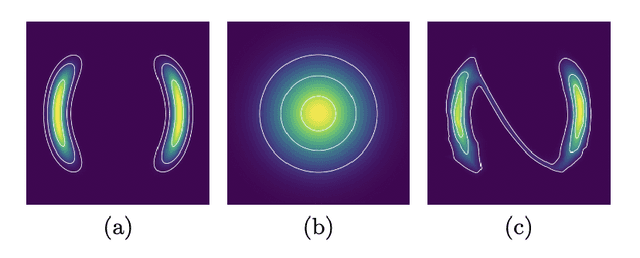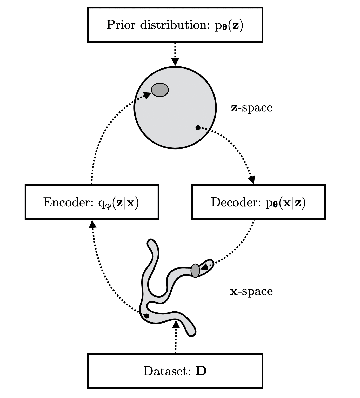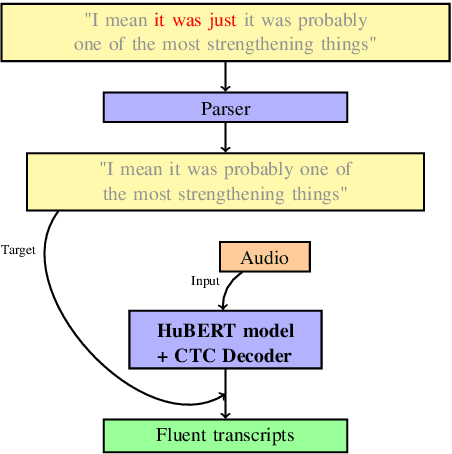David Roth
Variations and Relaxations of Normalizing Flows
Sep 08, 2023


Abstract:Normalizing Flows (NFs) describe a class of models that express a complex target distribution as the composition of a series of bijective transformations over a simpler base distribution. By limiting the space of candidate transformations to diffeomorphisms, NFs enjoy efficient, exact sampling and density evaluation, enabling NFs to flexibly behave as both discriminative and generative models. Their restriction to diffeomorphisms, however, enforces that input, output and all intermediary spaces share the same dimension, limiting their ability to effectively represent target distributions with complex topologies. Additionally, in cases where the prior and target distributions are not homeomorphic, Normalizing Flows can leak mass outside of the support of the target. This survey covers a selection of recent works that combine aspects of other generative model classes, such as VAEs and score-based diffusion, and in doing so loosen the strict bijectivity constraints of NFs to achieve a balance of expressivity, training speed, sample efficiency and likelihood tractability.
End-to-End Speech Recognition and Disfluency Removal with Acoustic Language Model Pretraining
Sep 08, 2023
Abstract:The SOTA in transcription of disfluent and conversational speech has in recent years favored two-stage models, with separate transcription and cleaning stages. We believe that previous attempts at end-to-end disfluency removal have fallen short because of the representational advantage that large-scale language model pretraining has given to lexical models. Until recently, the high dimensionality and limited availability of large audio datasets inhibited the development of large-scale self-supervised pretraining objectives for learning effective audio representations, giving a relative advantage to the two-stage approach, which utilises pretrained representations for lexical tokens. In light of recent successes in large scale audio pretraining, we revisit the performance comparison between two-stage and end-to-end model and find that audio based language models pretrained using weak self-supervised objectives match or exceed the performance of similarly trained two-stage models, and further, that the choice of pretraining objective substantially effects a model's ability to be adapted to the disfluency removal task.
 Add to Chrome
Add to Chrome Add to Firefox
Add to Firefox Add to Edge
Add to Edge